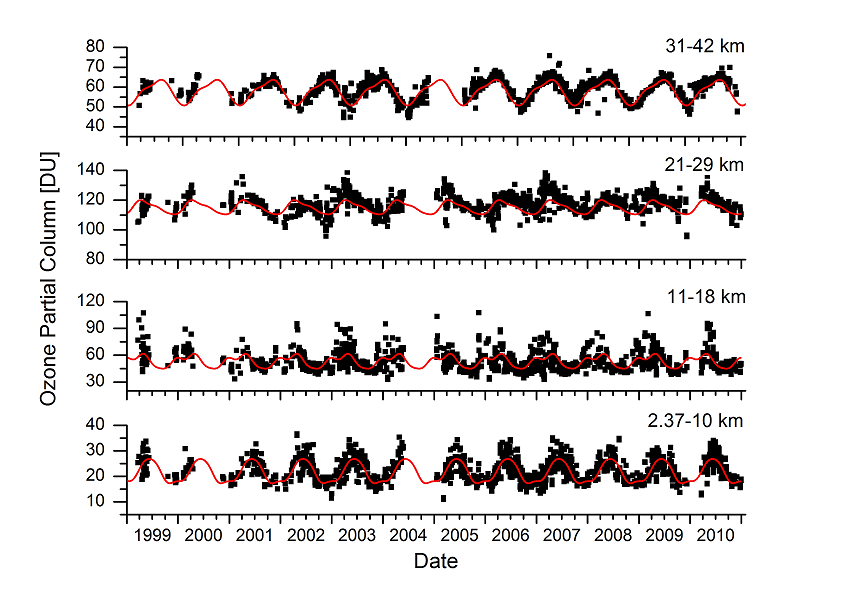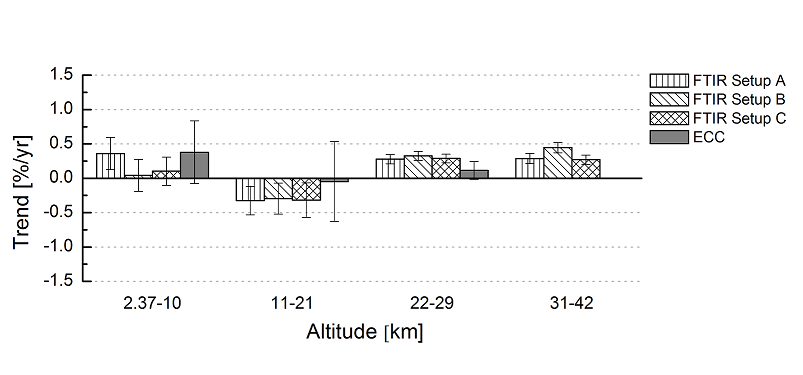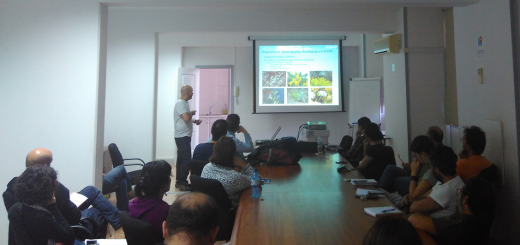Subtropical ozone profiles trends applying ground-based FTIR spectrometry.
![]()
In the coming decades some kind of ozone recovery is expected, however, it is difficult to predict how, when, and to what extent it will occur. Currently it is discussed how climate change will interact with ozone recovery. Climate models predict an accelerated stratospheric circulation, leading to changes in the spatial distribution of stratospheric ozone and an increased stratosphere-to-troposphere ozone flux. In order to verify or decline the different climate model simulations consistent long-term observations of the vertical distribution of ozone are required. In this context, the FTIR (Fourier Transform InfraRed) ozone products are very interesting for validating climate model simulations, but it is important to apply a retrieval setup that best assures the high quality of the profiles. Furthermore, it is important to document that the high quality can be maintained over many years. Only very consistent and high quality long-term time series are useful.
In this context a new paper, published recently in the Atmospheric Measurement Techniques Discussion, investigates the long-term evolution of subtropical ozone profile time series (1999-2010) obtained from ground-based FTIR at the ozone super-site Izaña Observatory. The influence of different retrieval strategies is examined, performing a detailed theoretical and empirical FTIR data quality documentation. The latter is based on an extensive intercomparison study between FTIR and Electro Chemical Cell (ECC) sonde ozone profiles.
The intercomparison of techniques has shown that the FTIR system is able to capture adequately the ozone variability in the troposphere, tropopause region, and middle stratosphere with a precision of better than 7.5%. The agreement between the vertical ozone distribution obtained by the FTIR and the ECC sondes is very satisfactory. During the 12 year period of 1999-2010 both techniques reveal very similar annual seasonality: in winter stratospheric ozone profiles are typical middle latitude profiles (low tropopause, low ozone maximum concentrations) and in summer/autumn they are typical tropical profiles (high tropopause, high maximum concentrations) (Figure 1). A good agreement is also observed for the linear trends (see Figure 2). The FTIR time series suggests that the long-term evolution of ozone concentrations is different at different altitude layers. We observe a significant negative trend in the upper troposphere/lower stratosphere region of about -0.3%/yr and a significant positive trend in the middle/upper stratosphere of about +0.3%/yr. Admittedly, a 12-year time series is too short for reliable trend studies, however, it is worthwhile mentioning that such subtropical ozone profile trends are predicted by climate models at the northern subtropical latitudes, due to an increased stratospheric circulation in response to climate change.
For more details about this study please refer to: García, O. E., Schneider, M., Redondas, A., González, Y., Hase, F., Blumenstock, T., and Sepúlveda, E.: Investigating the long-term evolution of subtropical ozone profiles applying ground-based FTIR spectrometry, Atmos. Meas. Tech. Discuss., 5, 3431-3471, doi:10.5194/amtd-5-3431-2012, 2012. Link.

Figure 1. Time series of FTIR ozone partial columns [DU] (setup C) for the different layers. Black dots: individual measurements (N=1887); Red lines: annual cycles.

Figure 2. Linear trends (change/10a, %/yr) between 1999 and 2012 for the FTIR (N=1887) and the corrected ECC sonde (N=459) datasets. The error bars indicate the 95% confidence ranges (2σ).







